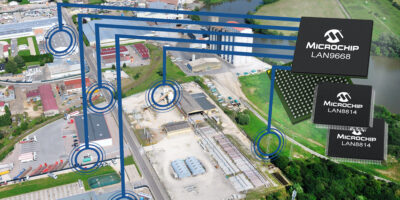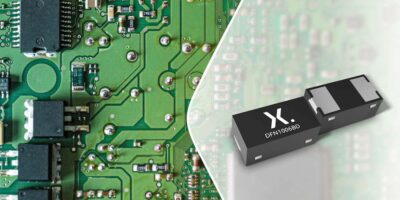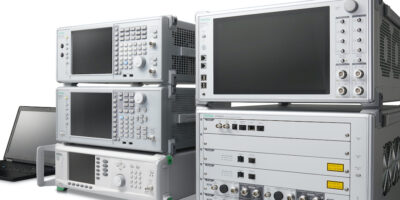Believed to be the industry’s first turnkey devices for industrial automation networks, the Microchip’s LAN9668x family of time sensitive networking (TSN) switching devices delivers IEEE standards-compliant features to lower latency data traffic flows and greater clock accuracy.
Connected warehouses and other industrial ecosystems with converged IT and operational technology architectures rely on TSN and Ethernet for precise timing, synchronisation and connectivity of devices including cameras, barcode readers, scanners and conveyors. These ecosystems require next-generation network technology to interconnect device, sensor and equipment communication. The LAN9668 TSN switching devices deliver IEEE standards-compliant features and are complemented by Microchip’s LAN8814 quad-port Gigabit Ethernet (GbE) physical layer (PHY) transceiver.
Microchip’s LAN9668-I / 9MX and LAN9668-9MX devices are eight-port switches for industrial and commercial applications, respectively, outfitted with Arm Cortex-A7 central processing units (CPUs), supporting TSN IEEE standards for communication in industrial settings. These include IEEE 1588v2 and IEEE 802.1AS-2020 for precision timing, IEEE 802.1Qci for per-stream filtering and policing, IEEE 802.1Qav and IEEE 802.1Qbv for traffic shaping and IEEE 802.1CB for seamless redundancy, as well as IEC-62439-2 (Media Redundancy Protocol) and ODVA-DLR and IEC-61158-6-10 for media redundancy.
Microchip’s Ethernet Switch API (MESA) and PHY API (MEPA) enable designers to develop a comprehensive, user-friendly function library that is operating-system independent. The LAN9668 and LAN8814 scalable TSN chipsets are supported by Microchip’s software framework and provide the lowest latency and end-to-end transmission of communication traffic.
The LAN8814 is a quad-port GbE PHY that supports the latest TSN requirements including IEEE 1588 v2 and frame pre-emption. Designers using LAN9668 and LAN8814 technology can employ the TSN chipset to achieve timing, stream reservation, protection and management, to reduce both development time and cost.
“While devices and equipment previously required their own communication systems, TSN improves interoperability through connecting data streams to simplify traffic,” said Charles Forni, vice president of Microchip’s USB and networking business unit. “Enabling converged network architectures, this technology allows developers to expand their products into new markets and provide better performance in existing networks,” he added.
Microchip also provides associated IStaX/SMBStaX and WebStaX network operating systems. They include a reproduceable reference design available as a board design or kit of Microchip parts including TSN switches, Ethernet PHYs, clock devices and oscillators.
The LAN9668-I / 9MX and LAN9668-9MX TSN Ethernet switches are supported by the VSC6817SDK IStaX Linux application software, an industrial Ethernet switch software solution supporting Microchip’s managed Ethernet switch devices. The VSC6817SDK IStaX Linux network OS is an industrial Ethernet switch software which supports Microchip’s managed Ethernet switch devices. The SMBStaX Linux network OS and WebSTaX Linux network OS are available to commercial designers. These development tools are highly integrated with advanced L2+ switch features.
Reference designs and evaluation boards also are available from Microchip and the company’s distribution partners.
The LAN9668/9MX and the LAN8814/ZMX are available in volume production.







